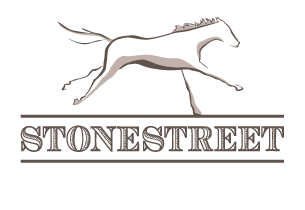Plank fences are one of the most iconic features of our Bluegrass landscape. These traditional wood fences protect our horses with strong, bold and easy-to-see barriers. Double fences on the perimeters provide extra protection against automobile crashes, downed trees, and other events that could compromise the safety of our horses as well.
Caring for the hundreds of miles of black plank fence across our three Central Kentucky properties is a continuous process. Fences represent a significant investment and a well-maintained fence can serve for nearly 20 years, whereas lax maintenance can reduce that lifespan by about a decade. As our Grounds Maintenance Manager says, “Maintaining fences is like maintaining a car, you need to stay on top of regular services like getting the oil changed and address small issues before they become big problems.”
Fence longevity begins with pasture planning. Building fence lines on higher ground, for example, can prevent posts, which set about three-feet into the ground, from rotting prematurely due to poorer drainage. Once established, weather and wear are the main threats to our fences. Black plank fences are traditionally painted every two years, which helps protect the wood from the elements and deters horses from chewing the fences. We prefer to paint in the summer and early fall, as warmer temperatures help the paint hold to the boards. In the past, black plank fences were often coated with coal tar creosote but new technologies have given farms many acrylic-based paint options which are environmentally friendly, non-toxic and still protect the wood against UV exposure and other elements.
Loose boards, popped nails and other concerns are certainly not just cosmetic, proper fence maintenance is crucial to keep our horses safe and happy. When horses chew on fences they can ingest splinters that can cause problems for them, and our fences become weaker as well. We watch our fence lines closely and replace any board that is showing about 30 percent of wear from chewing, most frequently, those ‘hot spots’ of wear from chewing occur near the gates of our paddock areas. While we fence with poplar posts, at Stonestreet, we find that using boards made out of firmer oak are longer-lasting.
We also use screw-in nails to provide another layer of safety for our horses. Straight nails are more prone to nail pops particularly in summer months when the wood they secure fluctuates in the temperature shifts between cool nights and hot days.
